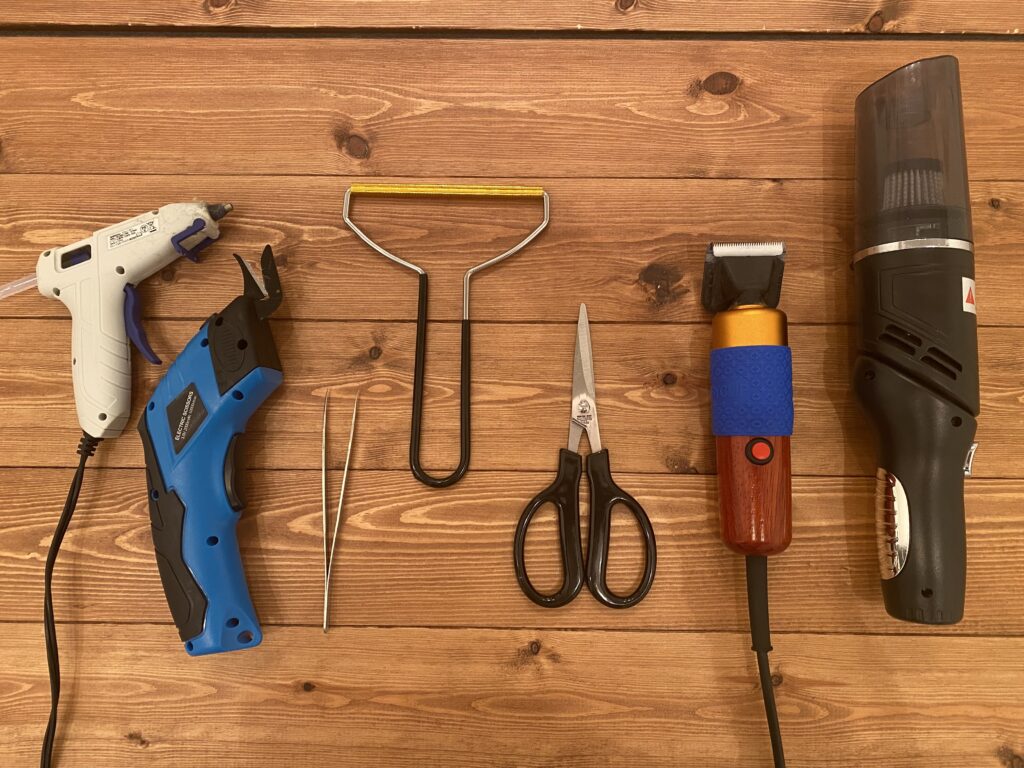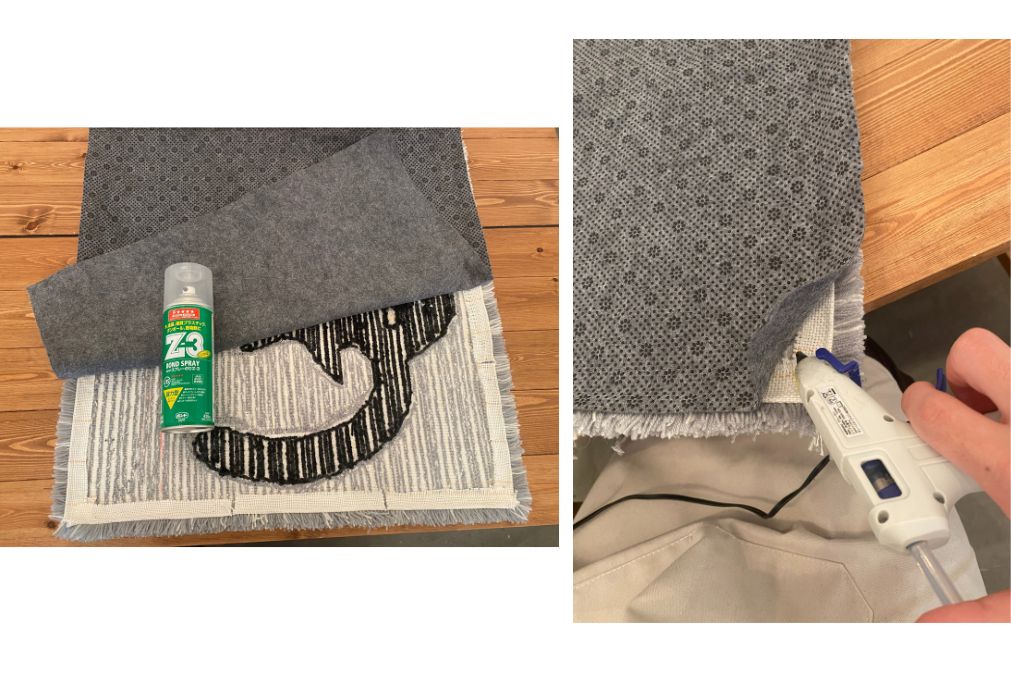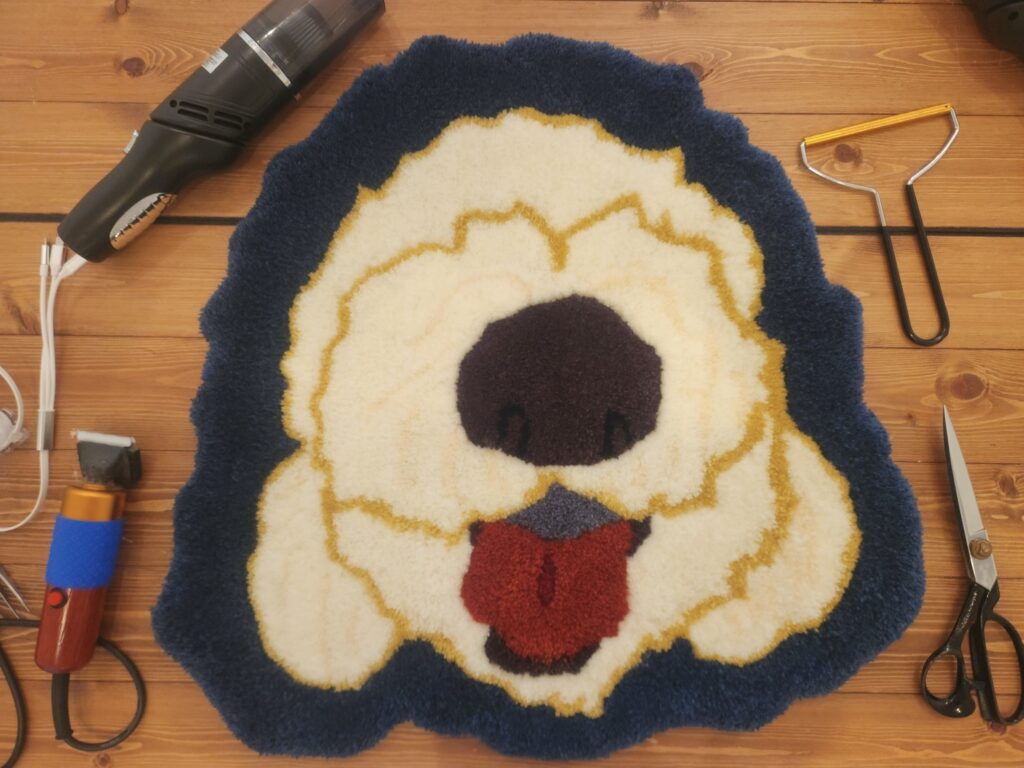1. Introduction
Tufting is a rug-making technique that involves using a tufting gun to insert yarn into a fabric base. However, the process does not end once the yarn is in place. The finishing process plays a crucial role in enhancing durability, ensuring stability, and refining the rug’s surface to achieve a polished look.
In this article, we will delve into the intricate finishing techniques in tufting, as meticulously practiced and shared by Studio dadada, a specialized tufting studio based in Tokyo, Japan.
2. Why Is Finishing Important?
After tufting, the yarn is only held in place by the fabric’s tension. Without additional reinforcement, the yarn may loosen or fall out over time.
Additionally, the rug surface may appear uneven, making the design less distinct. Therefore, the finishing process helps to:
✅ Secure the yarn to prevent shedding
✅ Increase the rug’s longevity
✅ Smooth the surface and enhance design clarity


3. Steps to Finish a Tufted Rug
Step 1: Applying Adhesive to the Back
✅ After tufting, a layer of adhesive is applied to the back of the rug to fix the yarn in place.
✅ The adhesive must be evenly spread to prevent bumps or irregularities.
✅ Drying time: Approximately 24 hours.

💡 Tip: Avoid getting adhesive on the yarn surface, as it may affect the rug’s softness.
Step 2: Attaching the Backing Fabric for Protection
✅ Once the adhesive is fully dry, a backing fabric is attached to protect the adhesive layer and enhance durability.
✅ Studio dadada uses a non-slip backing fabric to keep the rug in place on the floor.
✅ Ensure the backing is stretched evenly to prevent wrinkles.

Step 3: Trimming and Refining the Surface
✅ A trimmer is used to even out the rug’s surface, ensuring a polished look.
✅ Scissors & tweezers are used for precise detailing, removing excess fibers and defining the design.
✅ This step requires high concentration, as mistakes cannot be undone.
💡 Tip: This final touch determines the sharpness and overall aesthetic of the rug. At Studio dadada, artisans dedicate hours to meticulously refining each piece.

4. Experience the Finishing Process at Studio dadada
At Studio dadada, participants not only learn how to tuft yarn but also get hands-on experience in the finishing process, understanding what it takes to create a high-quality rug. If you want to craft your own professional-looking tufted rug, don’t miss their workshops!
5. Conclusion
The finishing process is the final but most critical step in tufting, ensuring the rug’s durability, clarity, and smoothness. If you are learning tufting or want to create a professional-grade rug, this step cannot be skipped!
📌 Read more at Studio dadada:
👉 Source: Studio dadada
